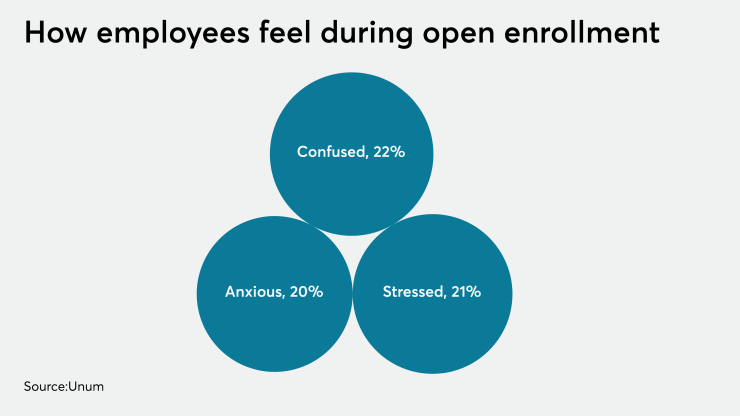With the start of open enrollment season each fall, Jennifer Benz takes to social media with some trepidation to gauge the mood of employees.
The results often confirm her worst fears.
“We look at the open enrollment tweets every fall,” says the communications leader at Segal Benz, a benefits communication firm. “You see people are very frustrated and overwhelmed.”
Most of this frustration has to do with poor communication on the employer side, Benz says, adding that with open enrollment right around the corner, employers need to find new strategies to ensure workers are getting the most out of their benefits packages.
Data shows that employees often spend little time preparing for open enrollment. A consumer confidence
Employers can help employees to better prepare for benefits enrollment by avoiding key mistakes that could prevent workers from digging deeper into their packages.
“I really think to make enrollment a good experience it’s the employer’s job or the plan sponsor’s job to do the work for the people,” Benz says.
One major mistake employers make is not laying out exactly what is changing in workers’ benefits packages from year to year or making that information difficult to find, Benz says. Another common gaffe is not simplifying open enrollment materials. Even when organizations try and make open enrollment materials easy to digest, they often don’t go far enough, she says.
“If you make it really clear to employees what’s changing, what’s available to them and then how much things are going to cost, you’re going to make it a good experience for folks,” Benz says.
But even then the employer’s job is not done, Benz says. Most employers think that they should lay out each health insurance plan option and allow the employee to decide for themselves which plan is best. In actuality, workers want a more targeted approach to health insurance selection. Instead of leaving them to choose from a wide, and perhaps bewildering, variety of options, it may instead be best to suggest which plan may be best for the employee based on their health and life stage, Benz says.
“People want someone to tell them ‘this is the plan that’s best for you,’” she says.
See also:
To avoid some of these pitfalls, Benz suggests that employers work with what they have to develop robust communications plans ahead of open enrollment. It is helpful, for instance, to blast out benefits information via a variety of channels, including written email and video. But surveying the open enrollment landscape, Benz is optimistic about the future.
“I think there are a lot of factors that are really changing the way organizations think about benefits communication, and that they are putting the right resources into it,” she says. “I do think things are significantly improving.”






